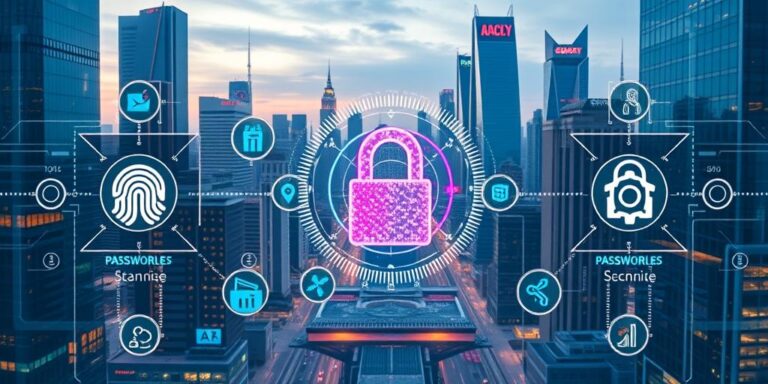The Future of Multi-Factor Authentication (MFA): Beyond Push Notifications in 2025
Multi-Factor Authentication (MFA) has become a cornerstone of modern cybersecurity, adding an extra layer of protection beyond simple passwords. While push notifications have been a popular method, the threat landscape is constantly evolving. This article explores the future of MFA, examining the limitations of push notifications and the emerging technologies that will shape authentication beyond 2025.
The Rise of MFA
MFA requires users to provide two or more verification factors to gain access to an account or system. These factors typically fall into three categories:
- Something you know: Password, PIN
- Something you have: Smartphone, security token
- Something you are: Biometrics (fingerprint, facial recognition)
By combining these factors, MFA significantly reduces the risk of unauthorized access, even if one factor is compromised.
Limitations of Push Notifications
Push notifications have gained widespread adoption due to their convenience. However, they are not without vulnerabilities:
- Phishing Attacks: Sophisticated phishing campaigns can trick users into approving malicious push notifications.
- MFA Fatigue: Repeatedly bombarded with push notifications, users may become desensitized and approve them without careful consideration.
- Man-in-the-Middle Attacks: Attackers can intercept and manipulate push notifications, compromising the authentication process.
- Reliance on Device Security: The security of push notifications depends on the security of the user’s device, which may be vulnerable to malware or physical theft.
Emerging MFA Technologies
As the weaknesses of push notifications become more apparent, several new MFA technologies are emerging to address these challenges:
- Passwordless Authentication: Eliminates the need for passwords altogether, relying on biometric authentication or security keys. Examples include WebAuthn and FIDO2.
- Biometric Authentication: Utilizes unique biological traits such as fingerprints, facial recognition, or voice recognition. Offers strong security and convenience but raises privacy concerns.
- Hardware Security Keys: Physical devices that generate cryptographic keys for authentication. Provide a high level of security and are resistant to phishing attacks.
- Behavioral Biometrics: Analyzes user behavior patterns, such as typing speed, mouse movements, and gait, to verify identity. Offers continuous authentication and can detect anomalies that indicate compromise.
- Decentralized Identity: Allows users to control their own digital identities and share them securely with relying parties. Based on blockchain technology and self-sovereign identity (SSI) principles.
- Context-Aware Authentication: Considers contextual factors such as location, device, and network to assess risk and adjust authentication requirements accordingly. For example, a user attempting to log in from an unusual location may be prompted for additional verification.
The Future of MFA Beyond 2025
Looking ahead, the future of MFA will be characterized by a shift towards more secure, user-friendly, and context-aware authentication methods. Several trends are likely to shape the evolution of MFA:
- Increased Adoption of Passwordless Authentication: As password-related breaches continue to rise, organizations will increasingly adopt passwordless authentication methods.
- Integration of Biometric Authentication: Biometrics will become more seamlessly integrated into authentication workflows, offering a balance between security and convenience.
- Rise of Decentralized Identity: Decentralized identity solutions will empower users to control their digital identities and reduce reliance on centralized identity providers.
- Enhanced Threat Detection and Response: MFA systems will incorporate advanced threat detection capabilities to identify and respond to sophisticated attacks in real-time.
- Focus on User Experience: MFA solutions will prioritize user experience, making authentication as seamless and frictionless as possible.
Conclusion
The future of MFA extends far beyond push notifications. Emerging technologies offer the promise of stronger security, improved user experience, and greater control over digital identities. As we approach 2025, organizations must embrace these advancements to protect themselves against evolving cyber threats and ensure a secure digital future. By understanding the limitations of current MFA methods and exploring innovative alternatives, businesses and individuals can take proactive steps to enhance their security posture and safeguard sensitive data.




